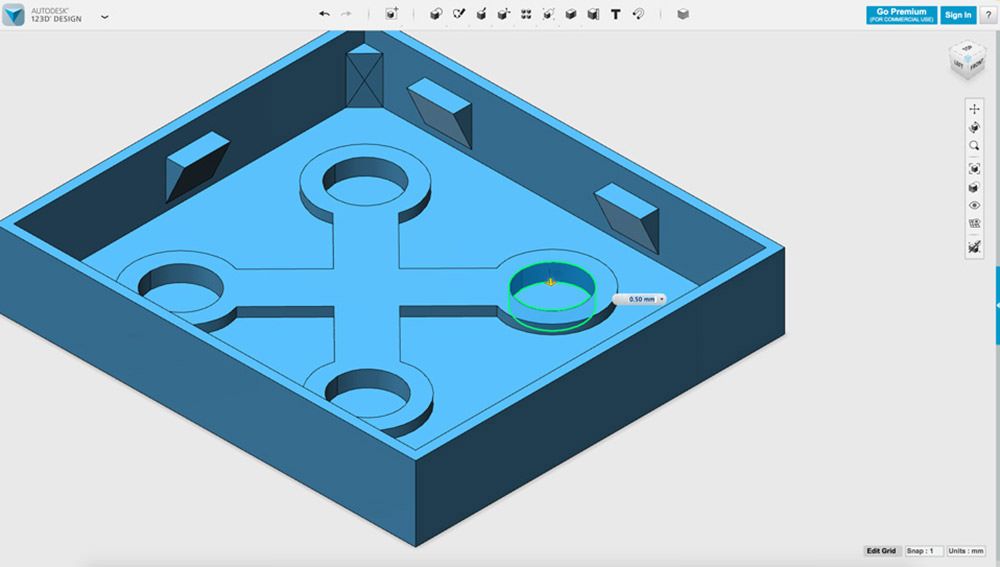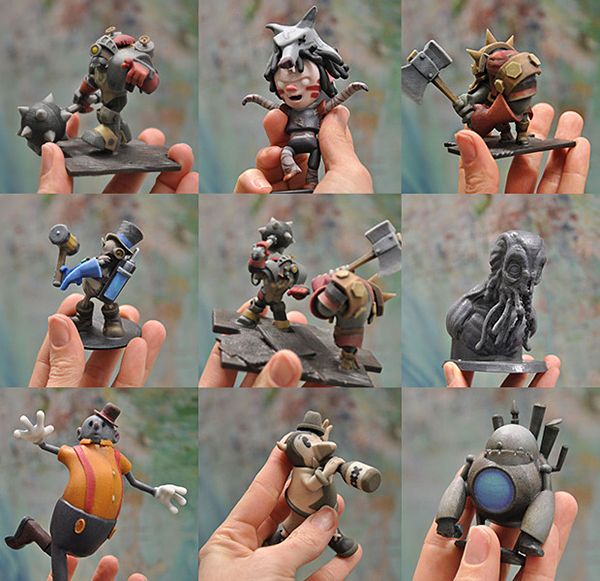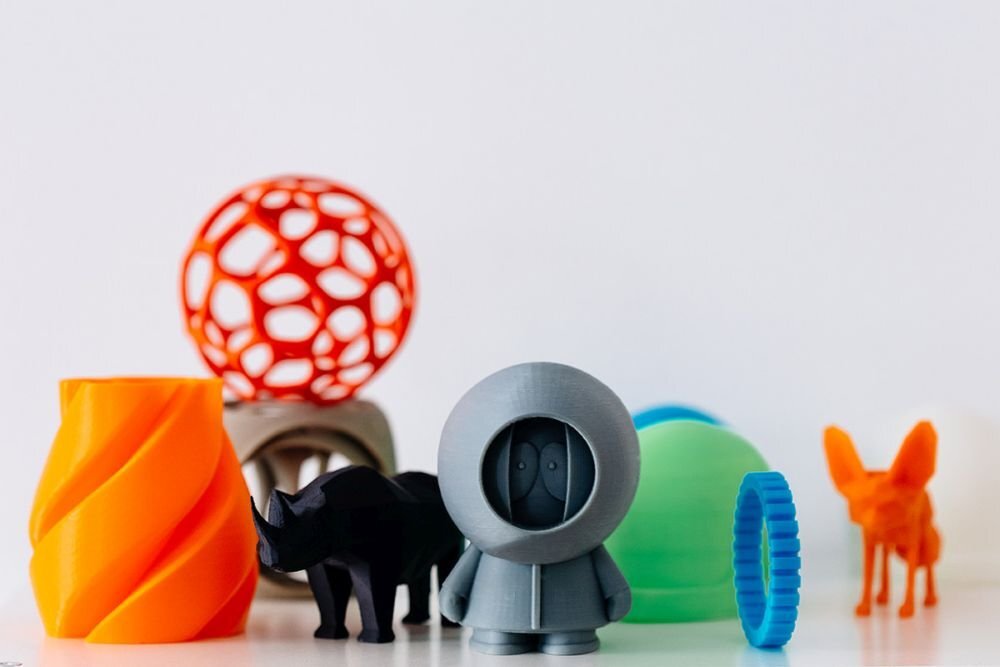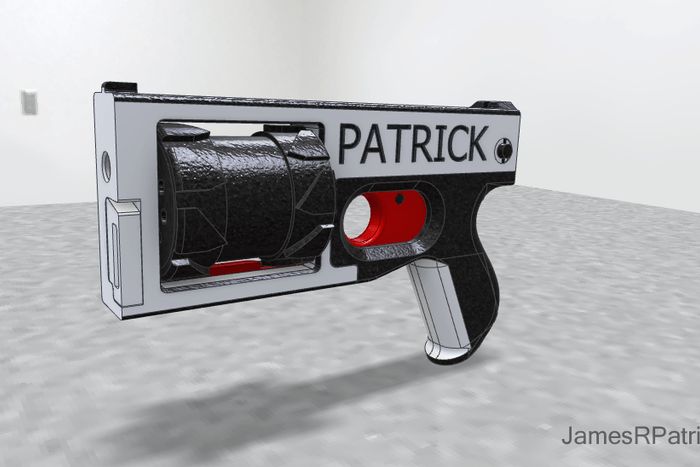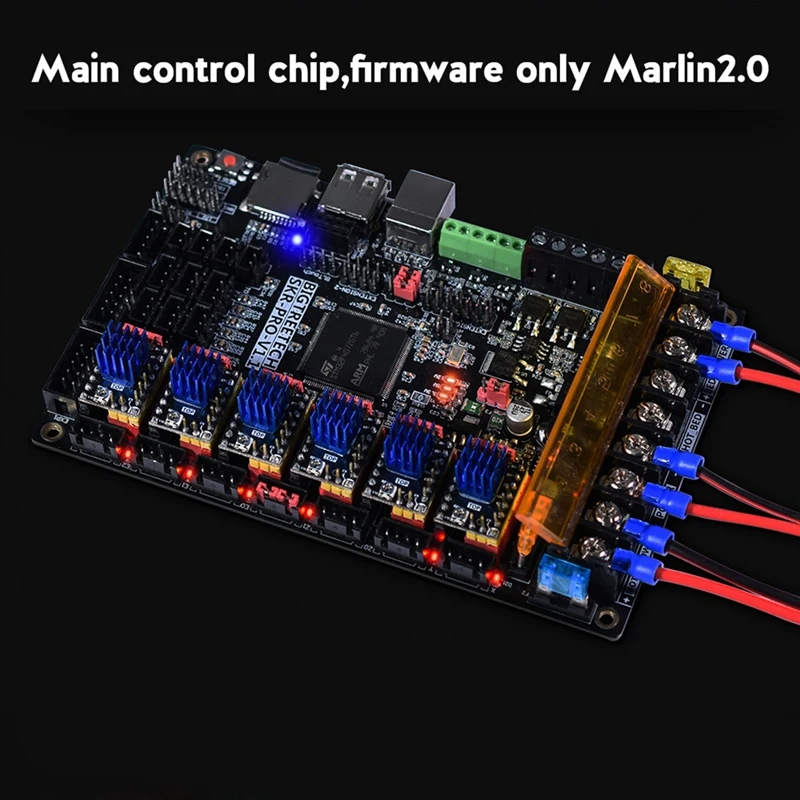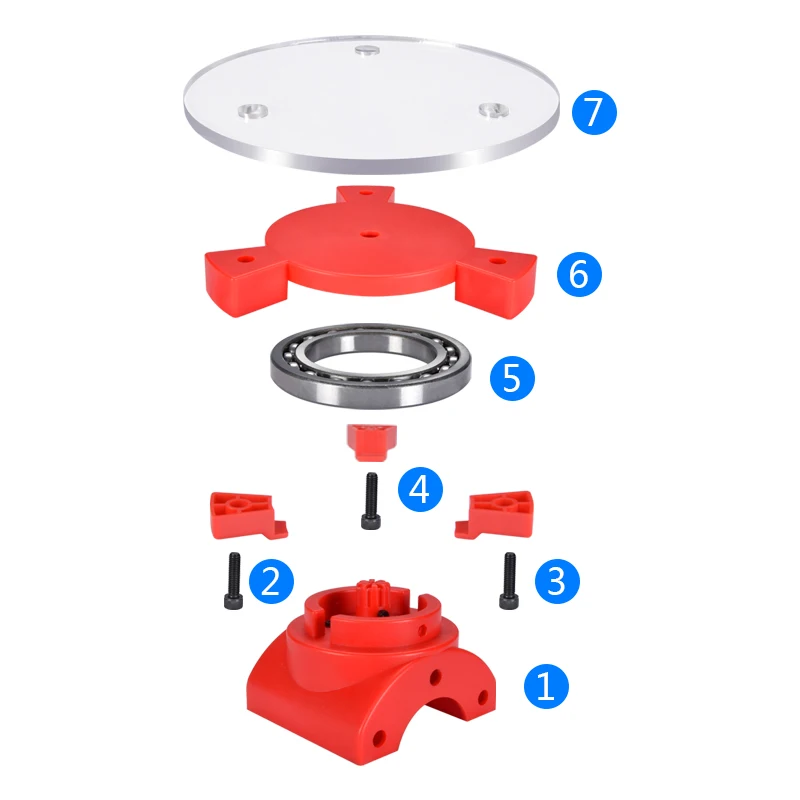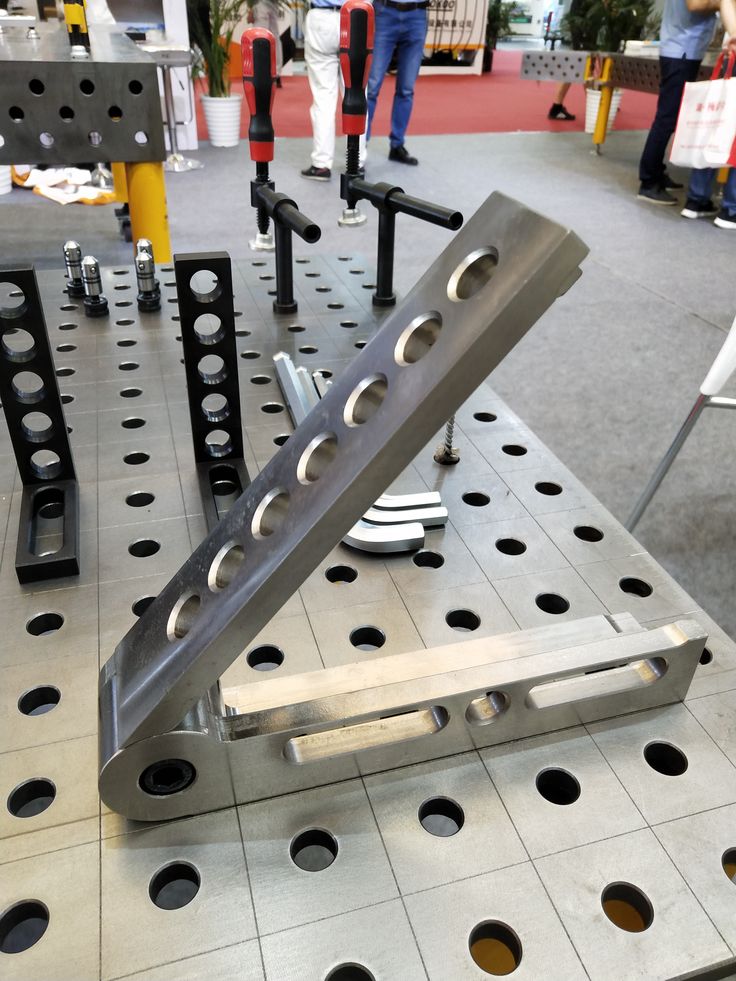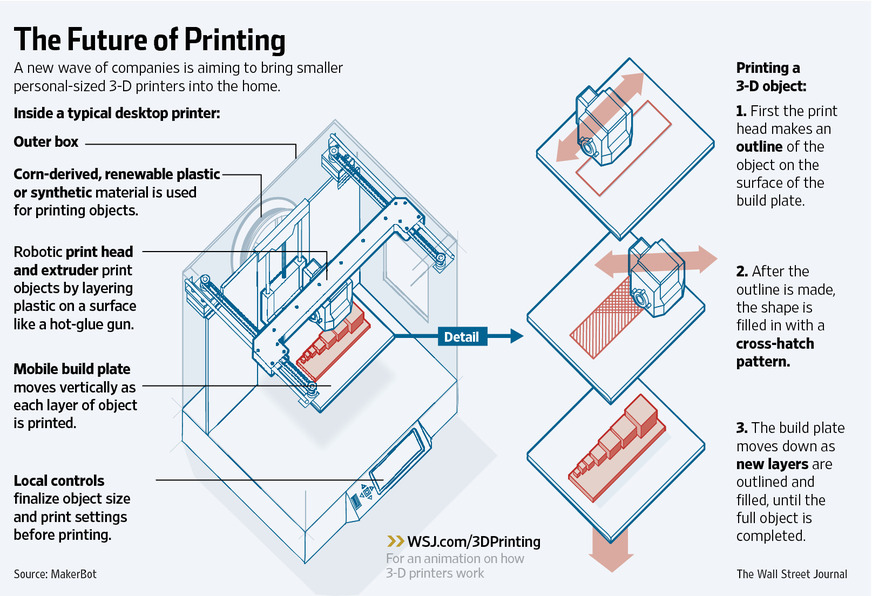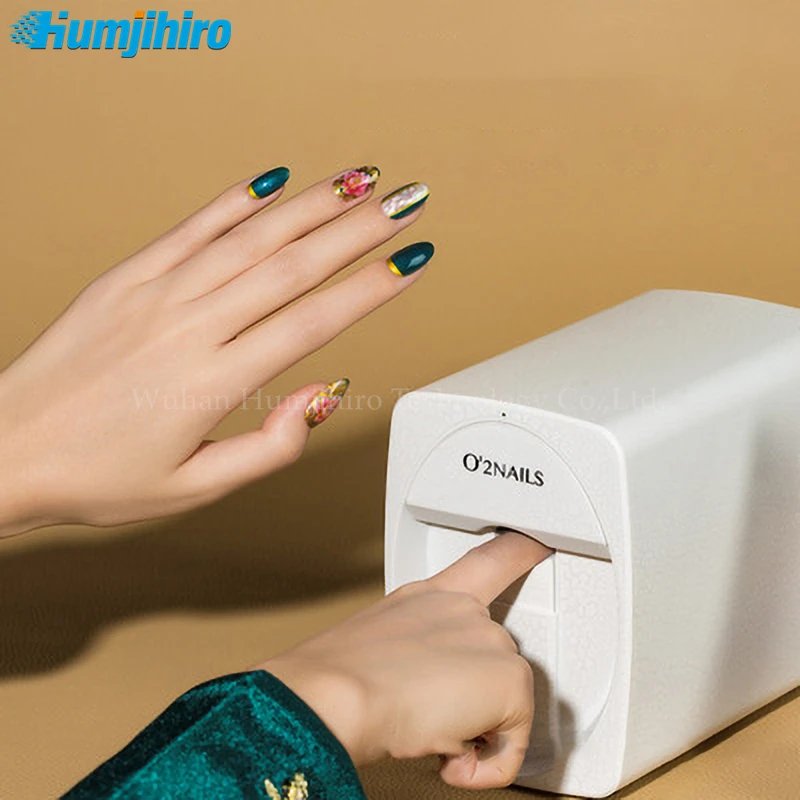3D printer overnight
3D Printer Fire Risks with Overnight Printing
Many 3D printing projects can take a long while to finish. Depending on the object’s complexity, it can take days or weeks and months to print. Because of this, you could wonder, “Is it safe to leave a 3D printer on overnight?” Suppose you have Ender 3, Original Prusa i3 MK3S, Anycubic Vyper, Voxelab Aquila S2, or any other machine. In that case, you should be aware of 3D printer fire risks.
A 3D printer can be a helpful tool. You’ll be able to use it to create a wide range of items, including elaborate 3D printed cosplay costumes, unique jewelry, replacement parts, models of your favorite pop culture characters, etc. But is overnight printing a good idea?
Overnight Printing
Advanced hobbyists and newbies who are just starting their first 3D print and see that their 3D printer requires more than 12 hours of work often worry about safety. Is it safe to leave Ender 3 running overnight? Can an overnight print cause such issues as a printer on fire? Are there any other problems you can come across if you pause 3D print overnight or leave a 3D printer on overnight? Do 3D printers use a lot of electricity?
It’s generally recommended that you avoid leaving a 3D printer on overnight. Some things can go wrong if you leave your 3D printer unattended.
One of the biggest potential problems is seeing a printer on fire. Here are the top reasons why this can happen:
- The heat might build up in the wiring. If there is too much heat, it could combust. The extruder will get hot. So, if something explosive, like a curtain, comes into contact with it, a 3D printer fire hazard could be possible.
- Another potential issue is that the fumes from the 3D printer can build up. It can lead to health issues if you breathe them in. To ensure that this doesn’t happen, you should ensure that you are using the 3D printer in a well-ventilated room. Sometimes, you can put a fireproof 3D printer enclosure for added security. You can even build an enclosure yourself.
- The 3D model might come loose, slipping off the build plate. But the extruder arm will continue to print. Within a few minutes, you’ll be left with a mess.
Read also: The Best 3D Printer for Beginners (15 Entry-Level Machines)
Image credit: Hackaday3D Printer Fire
Thankfully, you can take some steps to ensure that you don’t need to worry about a 3D printer fire hazard. Usually, the dangers of a 3D printer catching fire are attributed to insufficient electrical contacts and suspicious fire resistance of the plastic connector housing.
Usually, the dangers of a 3D printer catching fire are attributed to insufficient electrical contacts and suspicious fire resistance of the plastic connector housing.
It is always essential to keep an eye on the 3D printer. If something is going wrong, you’ll be able to step in and take control. It is necessary to inspect your 3D printer before you start printing. Search for loose wiring, which can happen when a screw comes loose. This inspection requires just a few moments, but it can significantly reduce the chances of a 3D printer fire.
Follow other 3D printer fire safety advice to avoid any dangers of 3D printing overnight.
Balrog 3D printed by Diego Molina3D Printer Fire Safety
If you an overnight printing fan, you might want to set up a camera to live stream the print to your phone and check it periodically during the night.
It’s good to install a smoke detector with your Ender 3 or a different machine in the room. It’s great to keep a fire extinguisher in the room.
While it’s rare for a 3D printer to start a fire, it can happen. If this does happen, it’s essential to act quickly to control the situation.
3D Printer Fire Suppression
Ensure that you purchase the most affordable yet high-quality 3D printer, the best 3d printer for cosplay, or get a fireproof 3D printer enclosure to protect your device.
3D printer fire suppression system by BlazeCutA suitable enclosure can become your best 3D printer fire suppression accessory. Fireproof and flameproof boxes can protect most brands of 3D printing machines.
Still, you must add ventilation and ensure your device does not overheat inside a fireproof 3D printer enclosure. If there is too much heat inside a box, the electronics and your printer motors will have a shorter life. The cold end could also become too warm and cause problems.
If you use hot ends, ensure the internal temperatures inside the enclosure are between 38C (100F) and 42C (107F).
Follow the manufacturer guidelines when you think of creating 3D printer fire suppression using a special fireproof enclosure, and you’ll be all right.
Pausing a 3D Print Overnight
Many printers are capable of pausing a 3D print overnight. If you need to leave home or don’t want to have your machine working while you are asleep, pause 3D print overnight. As long as you don’t move the bed, it should resume printing as usual when you return (of course, your machine should have the resume printing feature).
However, this won’t be suitable if you plan to leave the print for an extended period. The model will often shrink a little as it cools, leading to lop-sided prints.
Also, every manufacturer will add an abstract to their instructions to never leave a 3D printer working unattended.
How Long Can a 3D Printer Run
Is it safe to leave Ender 3 running overnight or not? As long as you get a high-quality 3D printer, you shouldn’t have any problems running it 24 hours a day.
According to some Ender 3 users, their printers work fine when left running overnight. According to Ender 3 manufacturer, proper use and maintenance of this popular and affordable machine can serve users for at least five years and for up to 10 years. But keep in mind that the Ender 3 lifespan and the lifespan of many other devices depend on how well hobbyists maintain their 3D printers and how often they use them.
According to Ender 3 manufacturer, proper use and maintenance of this popular and affordable machine can serve users for at least five years and for up to 10 years. But keep in mind that the Ender 3 lifespan and the lifespan of many other devices depend on how well hobbyists maintain their 3D printers and how often they use them.
But anyone afraid of a 3D printer fire hazard should better pause their machine right from its control box. If you own Ender 3 and don’t want to leave it for overnight printing, you can press the 3D printer to see standard options and click “Pause Print.” You will pause your device and bring its head and bed to a home position. Once you are ready to resume your print, click the “Resume Print” option.
By the way, many print shops that offer reliable 3D printing services worldwide often take overnight print orders. Thus, anyone with the proper safety procedures shouldn’t have any 3D printer fire problems. The best and more expensive printers can often run non-stop for weeks.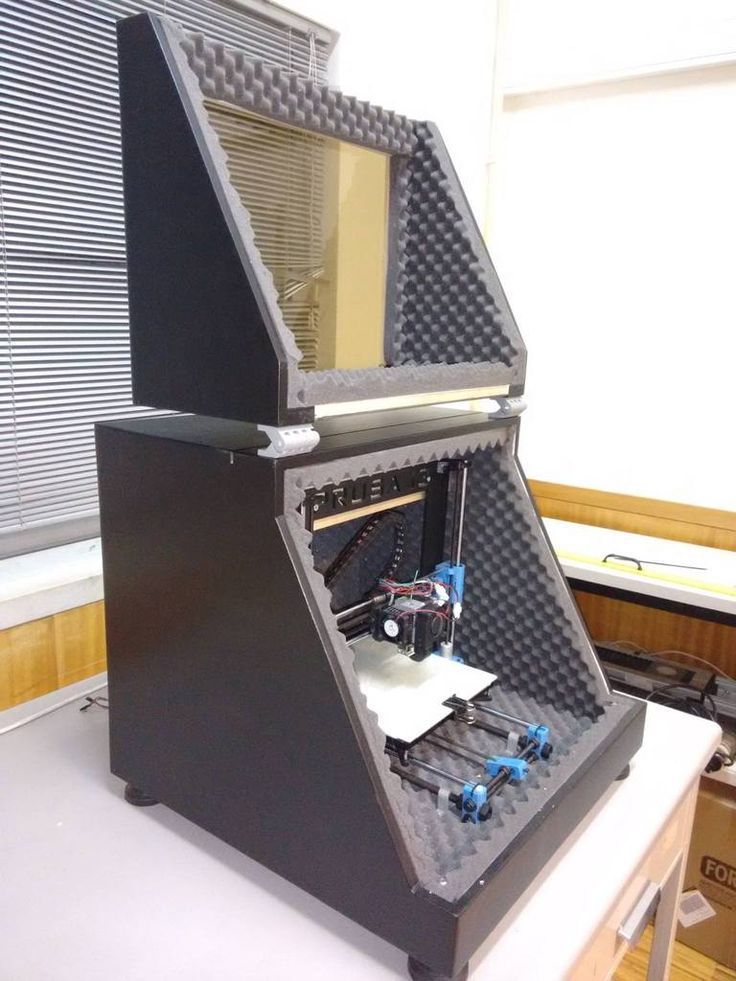
However, it is vital to stop printing once in a while to perform some maintenance. For example, you will need to clean the printer bed. It will ensure that the print will stick correctly. It’s also an excellent idea to re-level the bed and give your machine some rest.
Do 3D printers use a lot of electricity?
When you choose an overnight print option at home, you could worry not only about 3D printer fire suppression. Your other question could be, do 3D printers use a lot of electricity?
Alien 3D print by Robert SalvadorMost 3D printers are not big electricity consumers. Depending on the brand, your machine can use from 50 to 150 Watts as they 3D print. We can compare these numbers to how much 1-2 incandescent light bulbs use.
Of course, a lot depends on your particular device and the printing settings you use. So it would help if you did the calculations yourself, considering the information your manufacturer shares about your 3D printer.
Read also: Incredible Stuff You Can Make with a 3D Printer
Tips on Completing a Longer Print
There are a few strategies that you can use when taking on large 3D printing projects without overnight printing.
First, it’s essential to break your model down into multiple smaller prints using your favorite slicer. These individual prints can be assembled during the post-production process. If you do this, you will be able to create something larger than the base plate.
Stunning long print by Gordon MartinYou can join the prints together using several methods. The most common option is to use superglue. If you want to make a stronger bond, you can use screws. Gambody.com offers many detailed 3D printing models with special slots for neat assembly without glue and screws. You can see over 50 photos of finished no-glue 3D prints shared by many Gambody enthusiasts.
It’s also important to look at the settings of your printer. Double-check that everything has been appropriately calibrated. When making a larger model, any minor problems will be amplified.
Think about the type of material you are using. There are many types of filaments that you can explore. Unfortunately, not all of them are good for creating larger projects.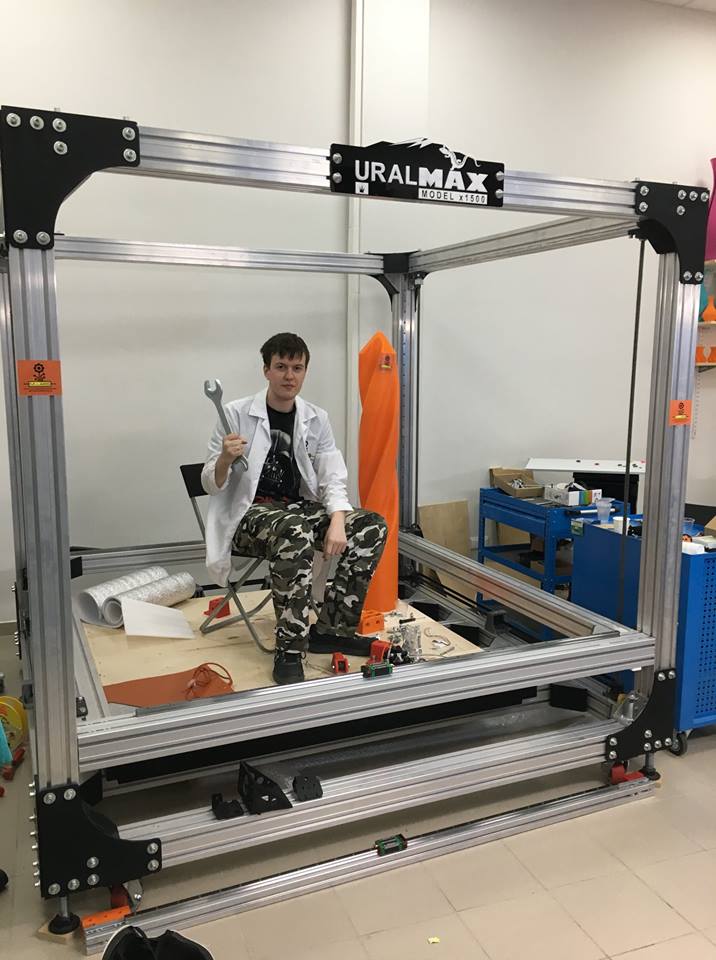 For example, ABS will shrink as it cools, which can cause some problems as the model might become cracked. Resin is too expensive to use for building giant models. But PLA could be great for making life-size 3D prints.
For example, ABS will shrink as it cools, which can cause some problems as the model might become cracked. Resin is too expensive to use for building giant models. But PLA could be great for making life-size 3D prints.
Printing larger models can be a bit of a learning curve. Don’t be upset if it doesn’t turn out exactly as you had hoped. Please keep track of any mistakes you made and work on improving them in the future. Before you know it, you’ll be printing large, complex models with ease and without 3D printer fire hazards. Remember that you don’t have to leave a 3D printer running overnight if you are afraid of catching fire. Pause your print and resume printing during the daytime when you are nearby and can control any situation.
Conclusion
3D printers are excellent devices that help bring your imagination to life. Follow a few safety precautions to evade 3D printer fire dangers. Avoid leaving the machine unattended and consider pausing your prints instead of overnight printing or build a fireproof 3D printer enclosure with all safety measures according to the manufacturer. While the odds of anything happening are low, especially if you have suitable safety precautions, it’s best to consider all possible risks and prevent dangerous situations.
While the odds of anything happening are low, especially if you have suitable safety precautions, it’s best to consider all possible risks and prevent dangerous situations.
(Visited 4,534 times, 1 visits today)
Author
3D Printing When Not at Home – Printing Overnight or Unattended? – 3D Printerly
3D printing when you are not at home seems like the normal thing to do, but I started to think whether it was actually a good idea. I’ve done some research to find out if it’s something that can be done without issues.
3D printing when not at home: should I do it? You should not leave your 3D printer unattended while printing as it is not safe. Many examples show fires breaking out and spreading around the room. There are ways to make it more likely to be safer such as using a full metal enclosure and having upgraded safety firmware.
There are a lot of things to take into account when deciding to print while away from home. In this post, I’ve described many safety precautions that will make things a lot more feasible for you to print at home when you aren’t there.
3D prints can take many hours, even more than a day to complete a print. So, it’s pretty unlikely that people haven’t left their printer running while asleep, overnight or while they were out.
How much are you willing to risk your house burning down? It just isn’t worth printing while not at home unless you have real preventative measures in place. It seems to be a risk many people seem to take on regularly.
Getting yourself a reliable 3D printer is essential in 3D printing comfortably at home. You can’t go wrong with the Ender 3 V2 3D Printer (Amazon). It’s been growing in popularity massively in the past few months because it does everything so well!
It has:
- Silent motherboard – gives strong anti-interference, faster and more stable motion & silent printing
- Safety UL Certified Meanwell Power Supply for long print times – concealed within the machine for increased safety.

- New 4.3″ UI User Interface – simple and clear operation and improved user experience
- Easy filament feeding with the rotary knob on the extruder
- Carborundum Glass Platform – fast heating bed, prints stick better, and ultra-smooth bottom layers
You can also get the Ender 3 V2 from BangGood for cheaper! (Delivery make take longer)
If you are interested in seeing some of the best tools and accessories for your 3D printers, you can find them easily by clicking here (Amazon).
What Can Go Wrong If I’m Not At Home?
A lot can happen from the time you leave home and come back when 3D printing. It makes sense, if you have a 10-hour print and leave for work or head out for a day to come back to a lovely final print.
Unfortunately, there are some issues to keep in mind when leaving 3D printers active when not at home.
There are many ways to protect your 3D printer from fire but with these hot temperatures, electric currents and DIY nature of 3D printing, there’s always a way that fires can occur without triggering some preventative alarm systems.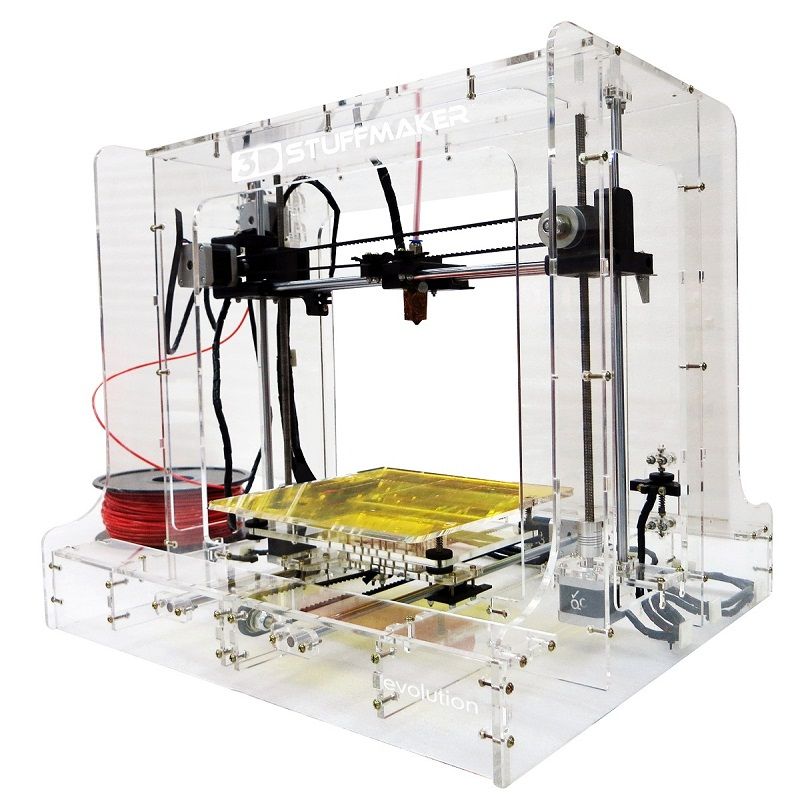
3D printing mostly comes with experience, knowing how your prints will process over a certain period of time. For example, if you wanted to leave your 3D printer running while you left the house, you may opt in for a print lasting a few hours rather than a 10-hour print.
The longer your printer is running, the longer it has for something to go wrong with potentially damning consequences.
For the most part, it’s not a great idea to leave your home with the washing machine, oven or dishwasher on but people still do it. The usual home appliances don’t have failures as often as 3D printers do.
There are many elements to a 3D printer that make it complex and therefore, less safe than common household appliances. It is, however, quite rare for a 3D printer to fail in a dangerous way and most of the time it just results in a bad quality final print.
The most popular and well-respected 3D printer is the Ender 3 V2 (Amazon or from BangGood), one of the best beginner 3D printers out there and produces high quality prints.
You are unlikely to experience many issues with a well put together Ender 3 printer.
From the high temperature extruder, to heated beds to motors and fans there are many issues that can occur. The problems come in due to the nature of how 3D printing processes are set up.
You have very high levels of control to set your 3D prints up, whereas household appliances operate how the manufacturer intended for you to operate, with knobs and switches.
The main serious failures that occur with a 3D printer is electronic fires, due to electric currents and heat building up in the wiring.
Most people aren’t electrical engineers so might not be clued-up in knowing what to check and look for, but this side of things is very important.
Electronic fires can easily spread around a room, even if the chances are small of it starting are small. An example of a way a flame can start is a connector not being able to handle the current from the heated bed.
If you want to 3D print when you are not home, make sure you are knowledgeable on the wiring aspect of your printer.
If you have a 3D printer which was built up from a kit, the electrical safety standards are your responsibility, and not the manufacturer of the kit.
This means if you are not an expert and put together a kit, it’s definitely not something you want to leave on while not at home.
I think once you’ve established that your printer isn’t faulty, and has printed many times without issues (especially longer prints), then you have a much better idea on how safe it will be but this isn’t 100% accurate.
Your normal 3D printer operation doesn’t usually start fires, neither does cooking but we all know it can happen. Knowing things can go wrong is a risk that people are willing to take responsibility for.
Preventative Measures For Printing When Not At Home
If you ever want to entertain the idea of 3D printing when not at home, you need to have several safety measures in place. Before every print, make sure to do a visual inspection of your components and make sure things are where they should be.
A few tips for you to follow:
- Check if your machine has an auto-shut off function.
- Research your thermal runaway settings.
- Get fire/smoke detection shut-off switches that cuts off power when something is detected.
- Isolate your printer from any flammable objects. (Filament is flammable).
- Consistently operate your printer and know that it works well.
- Print at lower speeds and lower temperatures as well as using PLA without a heated bed if possible.
- Get a camera set-up going so you can always check into your 3D printer.
- Make sure all your wiring and screws are secure and nothing is loose.
At the end of the day, all fires that have happened are because of operator error and a lack of maintenance. On top of that, not monitoring a printer in action.
Even if you have a high-quality printer, there is still the possibility that something could go wrong.
This is similar to having an expensive, well-made car but not maintaining it, you wouldn’t be surprised if you have some serious deterioration over time.
Enclosure
In the unlikely case that any fires occur, it’s best to have an enclosure which can cut off the oxygen a fire needs to grow.
Using software and hardware can assist you in having a safer environment for your printer. Also having flame retardant enclosures such as drywall, fibreboard or metal. A full metal cabinet seems to be a great solution to combat this.
There is an added advantage of maintaining the temperature around your prints making it more stable, and reducing warping. Many times with longer prints, it just isn’t feasible to be able to constantly watch it.
Creality have manufactured a pretty cool fireproof enclosure for 3D printers which you can purchase straight from Amazon, but they are pretty premium.
Get the Creality Fireproof 3D Printer Enclosure for your 3D printer for maximum safety! It fits the Ender 3, Ender 5 and other similar sized 3D printers.
If you need a larger version, they have you in mind. The Creality Large Fireproof 3D Printer Enclosure is also available from Amazon for a slightly higher price.
These enclosures will give you that necessary peace of mind to be able to print when your not at home. They make things a lot more safe if you decide to leave your 3D printer running overnight or while sleeping.
It also has many added benefits such as:
- Keeping a constant temperature printing environment to improve printing stability
- Flame retardant with pure aluminum film – will melt rather than catch fire and stops the spread.
- Quick and easy installation, just like everybody loves!
- Also reduces noise for those pesky loud 3D printers and provides dust protections
- Very stable iron pipe structure so it can withstand plenty
Smoke Detector & Fire Extinguisher
Having a smoke detector which is linked to a sprinkler system is a great idea to combat fires. If a fire does occur, the speed at which they can spread is just too fast for you to be able to do anything if you are not present.
A great method to combat fires is to have an automatic fire extinguisher mounted above your printer in the case that a fire breaks out.
There are some automatic fire suppression systems which can react to nearby fires by dousing them and putting them out. Also having a smoke detector/relay combo to cut power if any smoke is detected.
Smoke will usually come before a fire starts so having the power cut out before anything catches or spreads is a good idea.
One of the causes of fires starting can be from using too much hairspray or other substance on the heated bed to stabilize a prints first layer. If you want to run a printer while you aren’t at home or sleeping, definitely don’t use these substances.
Glass build plates are your best bet, and have a fire extinguisher nearby in case.
The Automatic Self-Activation Fire Extinguisher Ball is a great device that gives you an important safety feature and peace of mind in the rare event of a fire. It’s lightweight and promptly triggers in 2-3 seconds to suppress a fire, as well as sounding off a 120 decibel alarm.
It’s lightweight and promptly triggers in 2-3 seconds to suppress a fire, as well as sounding off a 120 decibel alarm.
At minimum you should have a smoke detector, a good one from Amazon is the Combination Smoke & Carbon Monoxide Detector.
You should also have a fire extinguisher on hand, the Kidde Fire Extinguisher has great reviews from people and fights class A, B & C fires. It’s quick and powerful with a discharge time of 13-15 seconds, as well as being lightweight.
In the case of fires, wooden printers or plastic printers should be totally avoided as they will add to the fire. The printers you want should be made from some kind of metal such as aluminum.
Just because the chances of fires breaking out are rare, doesn’t mean you should assume it won’t happen to you. 3D printing, especially in a bedroom is a bad idea because there are usually many flammable items in a bedroom.
These things won’t just affect you, but everyone around you.
Webcam Viewing Tool
Webcams can be set up so you can monitor your 3D printer remotely while it’s working but you may be helpless to stop it if something went wrong. A popular choice for 3D printer users is the Jun-Electron 5MP 1080P Video Camera Module for Raspberry Pi 4.
This module also requires a Raspberry Pi, the Model B is a great choice.
Having a live-feed camera on your 3D printer, with temperature readings being sent to yourself could combat this. Then in addition to this, having an emergency stop feature on your phone.
There is software out there that allows you to pause/cancel prints if something is going wrong, such as the MakerBot Desktop or Belkin App.
Not All 3D Printers Are Built The Same
There’s a huge variety of 3D printers which are built differently, with some being flagged for having issues. Most 3D printers tend to use many universal parts, but there’s a distinction between high-quality and low-quality 3D printers.
There’s been stories about certain printers which are notorious for causing issues.
The Anet A8 is one of the main culprits which have caused fires to break out, whereas the CR-10 is seen as a safe option. I think it mainly comes down to the wiring and currents running through the wires which cause fires.
In all fairness, the main issues that caused this have been patched up so an Anet A8 isn’t the worst 3D printer you can get but it definitely has a reputation.
Wires heat up and expand which results in more resistance and more resistance means more heat which continues into a cycle of overheating. The solution is to have high-quality, larger wires and connectors which can help withstand these currents.
This post here explains that even after many ‘standard’ upgrades and safety features were installed a fire still managed to break out. In this case, it wasn’t the usual culprits that cause fires such as the power supply, control board, or hot bed.
It was actually the hot end where the heat element actually detached from the hot end block. The firmware which was installed didn’t actually have the thermal runaway protection to shut off the system when temperature readings don’t match up.
You definitely do not want to leave a cheap Chinese model 3D printer unattended because there is so much that can go wrong.
Practically speaking, there is a very rare chance that a manufactured 3D printer to cause a fire, but that small chance is enough to be wary about it.
3D printer manufacturers are constantly putting more emphasis on safety features so over time it will get better.
3D printers that are ‘hobby-grade’ can fail and result in fiery disasters. This is why you definitely want a metal enclosure as a safety measure. Even with all the safety methods you implement, if a fire does break out you won’t be able to do much if you aren’t there.
Some 3D printers are very low-power and so are much less likely to become a fire hazard.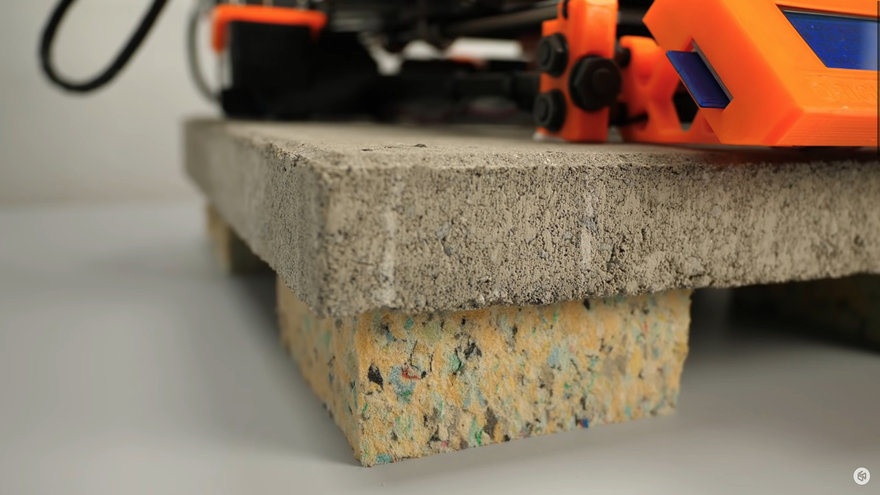 These can be a much better option if you wish to 3D print over long periods of time or overnight.
These can be a much better option if you wish to 3D print over long periods of time or overnight.
When looking online about fires from 3D printers, there’s a whole host of examples where people have walked into terrifying situations. This alone is enough to be informed that 3D printing when not at home is not a good idea.
The Ender 3 V2 (Amazon or from BangGood cheaper) as previously mentioned is going to set you in the right direction for a high quality, popular 3D printer that has a serious focus on safety. Long printing times and safety features are up-to-date and reliable.
Can a 3D Printer Start a Fire?
A 3D printer can start a fire if thermal runaway protection and other safety features haven’t been installed properly. It’s rare for a 3D printer to start a fire though, but it’s important to run checks on your 3D printer to ensure it is up to standard. I’d recommend using a 3D printer from a trusted manufacturer.
The video below by TeachingTech shows you how to test your 3D printer for thermal runaway protection.
As previously mentioned, as long as you have a reliable machine, you’ll be safe from 3D printer fires. There hasn’t been much news about 3D printers starting fires in recent times because companies have gotten their acts together.
These events mainly occurred from poorly put together machines and unfortunate circumstances with use. These days, even cheap machines will have the proper quality control, wiring, and safety features to prevent fires from happening.
How Long Can 3D Printers Run?
If you are wondering whether 3D printers can run 24/7, you aren’t alone. Even though you may not want to do it yourself, it’s still a question many people ask.
3D printers can run 24/7 successfully as shown by many print farms around the world. Printers that run constantly do have failures from time to time, but generally speaking, they can run for several hours concurrently without issues. Some single large 3D prints can run for over 2 weeks.
Printers that run constantly do have failures from time to time, but generally speaking, they can run for several hours concurrently without issues. Some single large 3D prints can run for over 2 weeks.
Related Questions
Will My Pets Be Safe With My 3D Printer? Pets can be very curious so if your 3D printer is not in an enclosure, it can be dangerous but not life-threatening. Most safety issues will be possible burns from high temperatures. Having your printer in an isolated room or out of reach should make it safe.
Are Cheaper 3D Printers Safe to Leave Unattended? Even though 3D printers are getting safer, I wouldn’t leave cheaper 3D printers unattended as they do have more problems. These may be manufactured without as many trials and testing than more expensive printers, so not the best idea to leave these unattended.
If you love great quality 3D prints, you’ll love the AMX3d Pro Grade 3D Printer Tool Kit from Amazon.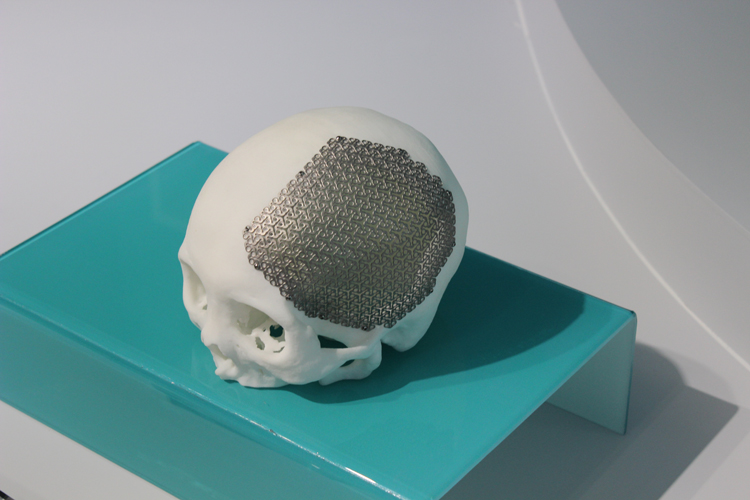 It is a staple set of 3D printing tools that gives you everything you need to remove, clean & finish your 3D prints.
It is a staple set of 3D printing tools that gives you everything you need to remove, clean & finish your 3D prints.
It gives you the ability to:
- Easily clean your 3D prints – 25-piece kit with 13 knife blades and 3 handles, long tweezers, needle nose pliers, and glue stick.
- Simply remove 3D prints – stop damaging your 3D prints by using one of the 3 specialized removal tools
- Perfectly finish your 3D prints – the 3-piece, 6-tool precision scraper/pick/knife blade combo can get into small crevices to get a great finish
- Become a 3D printing pro!
how not to miss the choice of a specific model for a beginner 3D printer / 3D printers, machines and accessories / iXBT Live
3D printer is a modern gadget that allows you to create unique models from polymer materials using FDM or SLA technologies. Such printers allow you not only to print the model you have designed according to individual drawings, but also to replicate it, repeating it over and over again. 3D printers have found their application in modeling, construction and design, industry and medicine. But users often make mistakes, obeying wow impulses and making spontaneous purchases. Knowing what you need a printer for will help you narrow down your search and choose the right model. nine0003
3D printers have found their application in modeling, construction and design, industry and medicine. But users often make mistakes, obeying wow impulses and making spontaneous purchases. Knowing what you need a printer for will help you narrow down your search and choose the right model. nine0003
Beginners often fall for a number of common mistakes and make the wrong choice. Most often, this leads to a situation where a person “cools down” to 3D printing, and the purchased printer remains gathering dust in the corner. Sometimes this is caused by technical problems and a lack of the required level of knowledge and experience, sometimes by an incorrect choice of printer model.
The first mistake is the lack of a purposeful choice
First, try to decide on the purpose - what do you need a 3D printer for. Honestly imagine what models or details you will print on it and what scale. This is necessary in order not to waste money and time, and not to get an unclaimed device in a dusty corner.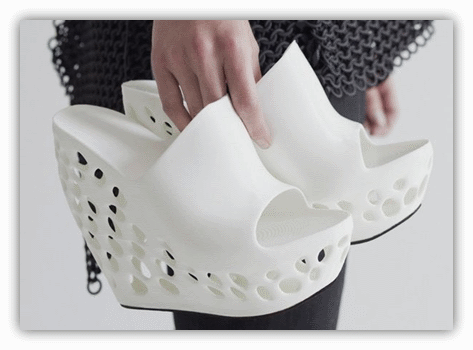 A compact 3D printer will be appropriate in the office or at home, it will be helpful in studies, hobbies or in your own business. The printer allows you to print models that you yourself have drawn in CAD, create components for a training project, shapes and parts for hobby and modeling, use open projects. Determine the media you plan to print with. FDM filaments such as PLA/ABS/PETG are available, as well as exotic (WOOD/Carbon/Nylon), elastic (TPU/Flex), etc., as well as photopolymer resins (SLA Resin). And if PLA / ABS are available for almost all FDM models, then compatible printers should be selected for the rest. For example, Nylon is extremely demanding on adhesion, TPU / Flex - on the plastic feed mechanism, etc. nine0003
A compact 3D printer will be appropriate in the office or at home, it will be helpful in studies, hobbies or in your own business. The printer allows you to print models that you yourself have drawn in CAD, create components for a training project, shapes and parts for hobby and modeling, use open projects. Determine the media you plan to print with. FDM filaments such as PLA/ABS/PETG are available, as well as exotic (WOOD/Carbon/Nylon), elastic (TPU/Flex), etc., as well as photopolymer resins (SLA Resin). And if PLA / ABS are available for almost all FDM models, then compatible printers should be selected for the rest. For example, Nylon is extremely demanding on adhesion, TPU / Flex - on the plastic feed mechanism, etc. nine0003
For example, for modeling in scales 1:72, 1:350, etc. It will be convenient to use an SLA printer that allows you to create products with high detail of photopolymer resin. That is, first we set a goal for ourselves - what the printer is for, and then we select the appropriate model. For example, quite high-quality and popular ANYCUBIC Photon models with high printing accuracy. And for an introduction to 3D printing, a simple and reliable printer like the Artillery Hornet or the Creality3D Ender-3 will do.
For example, quite high-quality and popular ANYCUBIC Photon models with high printing accuracy. And for an introduction to 3D printing, a simple and reliable printer like the Artillery Hornet or the Creality3D Ender-3 will do.
The second mistake is buying 3D printers with a large margin
One of the most common user mistakes when choosing a 3D printer is buying a "bigger" and "oversized" model. I encounter this type of error quite often. First, the user "invests" in a large printer, and then realizes that there is nothing to print on this option, and for small parts, a smaller printer could be chosen. First of all, large printers are more expensive, larger in size and more demanding on the rigidity of the frame as a whole. On a large area of the table, the effects of shrinkage of plastic, distortion of the dimensions of the printed model, delamination of the applied plastic, as well as peeling off of the corners from the working surface of the table, are more pronounced. This can be dealt with, but the listed points can become a serious problem for a novice user. And the printing time for large-volume models can be measured in tens of hours. nine0003
This can be dealt with, but the listed points can become a serious problem for a novice user. And the printing time for large-volume models can be measured in tens of hours. nine0003
Purchasing large margin 3D printers can be justified in cases where you really plan to print large models without splitting, as a whole. A good example of a 3D printer with a large workspace would be Anycubic's Chiron (table size 400 x 400 mm with a maximum print height of 450 mm), the LONGER LK5 Pro (300 x 300 x 400 mm with additional frame reinforcement), or the Artillery Sidewinder X1 (also 300 x 300 x 400 mm).
Third mistake - buying 3D printers with complex calibration
Another common mistake users make is buying 3D printers with complex calibrations. These can be Delta printers, Scara models and the like. At first glance, they may seem interesting and simple, but from experience I will say that fine-tuning such printers can be a significant problem for the owner, requiring a deep understanding of the mechanics of the printer and the principles of 3D printing, as well as quite complex calibration of the movement of the print head along all axes of the device. Up to the fact that the resulting printing problems can completely discourage further desire to print and study 3D modeling. nine0003
Up to the fact that the resulting printing problems can completely discourage further desire to print and study 3D modeling. nine0003
Therefore, we check the characteristics and description of the selected models in advance. Examples of similar printers from Aliexpress are Flsun Delta Kossel, Anycubic Kossel, HE3D Kossel and the like. An acceptable option is when modern 3D printers are equipped with automatic sensors for calibration and table calibration assistants in the regular display menu.
Fourth Mistake - Color 3D Printers
Buying complex printers that can print with multiple colors or multiple plastics can cause additional problems. Yes, the result of multi-color printing of models or colored figures without the need for coloring can be interesting. But in real printing, you will face the complex preparation of the model in the slicer, the need for a deep understanding of the process and the nuances of printing with several types of plastics. nine0003
There are several dual filament printing options, ranging from Y-extruders to multiple independent printheads. When printing alternately one of the two heads, heated plastic can seep out of the unused one - you need to take into account retracts, “cleaning” before changing plastics (an additional separate “service” model is built nearby), calibration and alignment of the heads along the same coordinates. Color models must be loaded into the slicer separately, assigning a different model to each extruder. And if you still need color printing for work or your own project, then it makes sense to choose one of the proven models. For example, the JGMAKER Artist D 3D printer, which has two movable and independent print heads at once, each of which can be filled with a separate spool of plastic. This makes it possible not only to print color models, but also to create two separate models on the table at the same time, and it will also be convenient for printing soluble supports. nine0003
When printing alternately one of the two heads, heated plastic can seep out of the unused one - you need to take into account retracts, “cleaning” before changing plastics (an additional separate “service” model is built nearby), calibration and alignment of the heads along the same coordinates. Color models must be loaded into the slicer separately, assigning a different model to each extruder. And if you still need color printing for work or your own project, then it makes sense to choose one of the proven models. For example, the JGMAKER Artist D 3D printer, which has two movable and independent print heads at once, each of which can be filled with a separate spool of plastic. This makes it possible not only to print color models, but also to create two separate models on the table at the same time, and it will also be convenient for printing soluble supports. nine0003
Fifth mistake - choosing simplified "children's" models
There are entry-level models in the range of 3D printer manufacturers.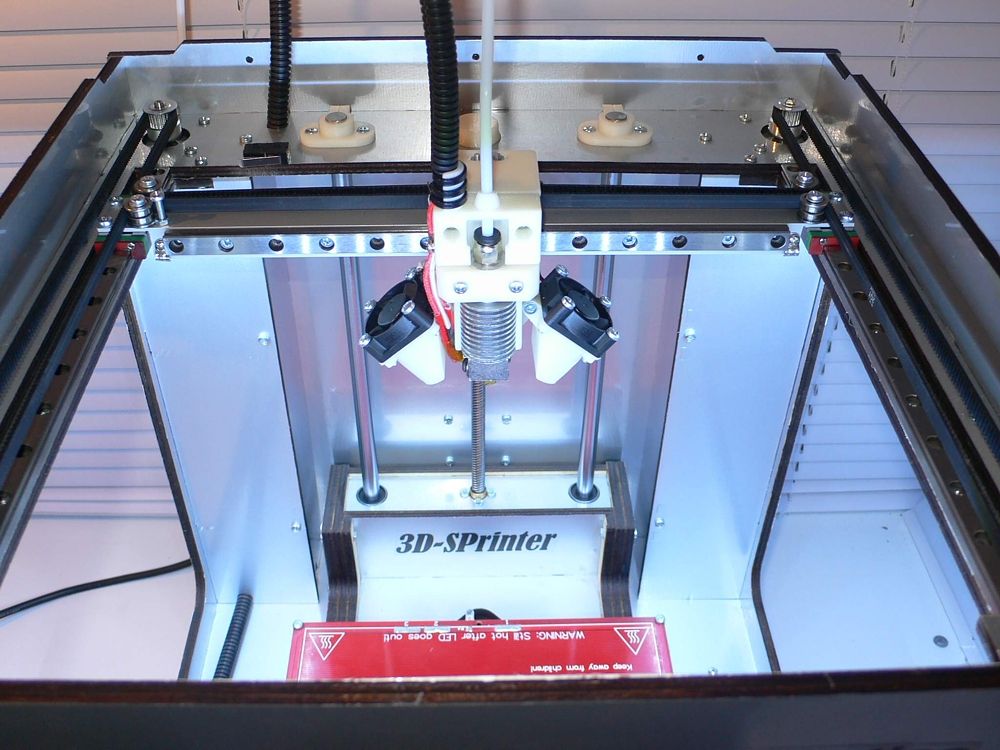 Sometimes a manufacturer saves by releasing models at the bottom of the market. These are budget options for novice users; in fact, these are “children's” printers. A good example is the Wanhao Duplicator i3, a simplified L-layout printer. The reduced rigidity of the carrier frame does not allow for high print quality. I note that the choice of models without blowing the thermal barrier can also be a potential problem. When printing for a long time, the thermal transition in the print head overheats and plugs can occur, leading to damage to models. This also includes 3D printers without a heated desktop, designed to print only with PLA plastic. nine0003
Sometimes a manufacturer saves by releasing models at the bottom of the market. These are budget options for novice users; in fact, these are “children's” printers. A good example is the Wanhao Duplicator i3, a simplified L-layout printer. The reduced rigidity of the carrier frame does not allow for high print quality. I note that the choice of models without blowing the thermal barrier can also be a potential problem. When printing for a long time, the thermal transition in the print head overheats and plugs can occur, leading to damage to models. This also includes 3D printers without a heated desktop, designed to print only with PLA plastic. nine0003
However, children's models are also important and needed. They are designed to provide basic skills and an introduction to the world of 3D printing on a limited budget. A vivid example of such a model is the Funtastique EVO and LONGER Cube2 3D printers, which can be an interesting gift for a schoolchild.
What to choose from the range of available 3D printers?
Thus, imagining the use of a 3D printer specifically for your purposes, you can choose the right model. If you do not have serious skills, then it is better to purchase a simple and reliable printer that has proven itself. Long-sold models from Anycubic, Wanhao, Longer and others will be a good choice. nine0003
If you do not have serious skills, then it is better to purchase a simple and reliable printer that has proven itself. Long-sold models from Anycubic, Wanhao, Longer and others will be a good choice. nine0003
But after gaining experience in 3D printing, you can move on to other options. Don't forget to get some 3D printing plastic too! If you are interested in other models of 3D printers, then I recommend that you look at the following articles:
Choosing a 3D printer for home and hobby: a selection of current models for printing plastic using FDM technology.
Choosing the best 3D printer for home and hobby (FDM).
A selection of 3D printers, consumables and accessories for photopolymer SLA printing. nine0003
Other reviews and tests of smartphones, tools and gadgets you can find in my profile and links below.
Thank you for your attention!
10 reasons to use OctoPrint for 3D printing
3DPrintStory Reviews 10 Reasons to Use OctoPrint for 3D Printing nine0003
Surely everyone had problems with 3D printing, which was left overnight in the hope of getting a finished 3D model in the morning. Or it was simply not possible to constantly monitor the 3D printing process in order to stop it in time. e in case of an error. It is this problem - the problem of monitoring 3D printing - that is solved with the help of the wonderful free and open source software OctoPrint.
Or it was simply not possible to constantly monitor the 3D printing process in order to stop it in time. e in case of an error. It is this problem - the problem of monitoring 3D printing - that is solved with the help of the wonderful free and open source software OctoPrint.
OctoPrint is a Raspberry Pi-based 3D printer application that allows you to remotely control your 3D printer. Created by Gina Heusge in 2012, the software is constantly being improved with new versions and new features (via plugins) coming out regularly. nine0003
In this article, we will highlight the top 10 reasons to use OctoPrint. Some of the problems in this list are solved with the help of additional plugins. By the end of this list, you'll probably want to try OctoPrint if you haven't already.
Wireless 3D printing
Many budget 3D printers do not provide the ability to control or monitor the 3D printer wirelessly. Models must either be downloaded to an SD card or transferred directly via cable. These connection options have their limitations. OctoPrint offers an excellent solution to this problem. nine0003
These connection options have their limitations. OctoPrint offers an excellent solution to this problem. nine0003
As we briefly mentioned earlier, OctoPrint provides software that is installed on the Raspberry Pi and then connected to the 3D printer. Thanks to the wireless capabilities provided by Raspberry Pi, you can control your 3D printer wirelessly via LAN.
OctoPrint allows you to remotely send G codes, control the temperature of the extruder and hot end, monitor the 3D printing process and much more. Thanks to OctoPrint's wireless 3D printing capabilities, you can always control your 3D printer, even if you are not physically present. nine0003
3D printing from anywhere in the world
As you know, wireless 3D printing is convenient if you are at home and on the same network. But what if you left home and wanted to start printing and was finished when you got home? Or what if you want to keep an eye on the 3D printing process when you're not at home?
Plug-in OctoPrint Anywhere allows you to control (start and stop) and control 3D printing from literally anywhere. This is a website that can be accessed from your computer or mobile device. nine0003
This is a website that can be accessed from your computer or mobile device. nine0003
This plugin has a large following, but keep in mind that the OctoPrint developers recently announced that it will eventually be replaced by a more elaborate and updated plugin called Spaghetti Detective.
View G-code
Typically, users using OctoPrint monitor the 3D printing process through a webcam connected to their Raspberry Pi. However, if you don't have a webcam or just want to check your 3D print in a different way, the G-code viewer is a great tool. nine0003
This underrated OctoPrint feature shows nozzle position and layer number in real time. You can also find the status of your 3D print in the window just below the renderer, which shows the current G-code commands being sent to the 3D printer.
Commands from the terminal
The ability to send commands from the terminal is a great feature for more advanced users. You can view the codes sent to the 3D printer in real time. nine0003
nine0003
One of the most useful features is sending custom G-code commands to your 3D printer. Instead of relying on another program to communicate with your printer, such as Pronterface, you can directly send commands to the OctoPrint terminal.
This feature can be useful in a number of scenarios. If you need to calibrate your 3D printer, you can view the existing system presets in a terminal command. Some commands also allow you to enter and save new calibrated values. This is a very handy feature for those who like to tinker with their 3D printer at a deeper level. nine0003
Slow motion
You know that 3D printing is a long process, it can take hours to print one model. Setting up a time-lapse video allows you to view the entire 3D printing process, which lasts several hours, in a matter of seconds.
With OctoPrint and with a camera connected to your Raspberry Pi, you can capture excellent frame-by-frame 3D printing video by setting the frame rate and interval between shots. For true enthusiasts, there are also more advanced customization options. nine0003
For true enthusiasts, there are also more advanced customization options. nine0003
OctoPrint stores the timelapse locally on the Raspberry Pi and you can download it to your computer. Another useful feature of time-lapse video is the ability to determine the exact cause of a 3D print failure, or at least the point at which the failure occurred.
Octolapse is a plug-in that builds on the functionality of OctoPrint's Timelapse section to produce cleaner, crisper videos.
Slicing 3D Models in the Cloud
Cloud Slicing, as the name suggests, is a remote slicing feature that allows you to slice your 3D models without actually installing the slicing software on your computer. Model slicing is performed using a plugin installed on the Raspberry Pi. nine0003
Consider the scenario where your laptop is full of applications and you can't/don't want to install a new slicer. Or imagine not wanting a slicer for every computer you use. This is where the Cloud Slicing plugin fits in perfectly. This feature uses the Cura or Slic3r engine plugin.
This feature uses the Cura or Slic3r engine plugin.
Touch screen for user interface
Touch screen user interface has become the norm for many everyday devices. However, many 3D printers still lack this useful feature. nine0003
With the OctoPrint TouchUI plugin, you can add this feature and display the OctoPrint interface on the touch screen. This plugin will allow you to use OctoPrint without connecting a computer. The user interface on the touch screen is very similar to that in the browser, so the transition in terms of learning a new interface will not be difficult.
Installing a touch screen can seem like a tedious task, but there are plenty of tutorials and videos to help you through the process. nine0003
Open-source community
Individual developers have spent hours of their time improving 3D printing, including free and open source software such as Marlin, Cura, and OctoPrint itself.
OctoPrint's popularity is largely due to open source and free access.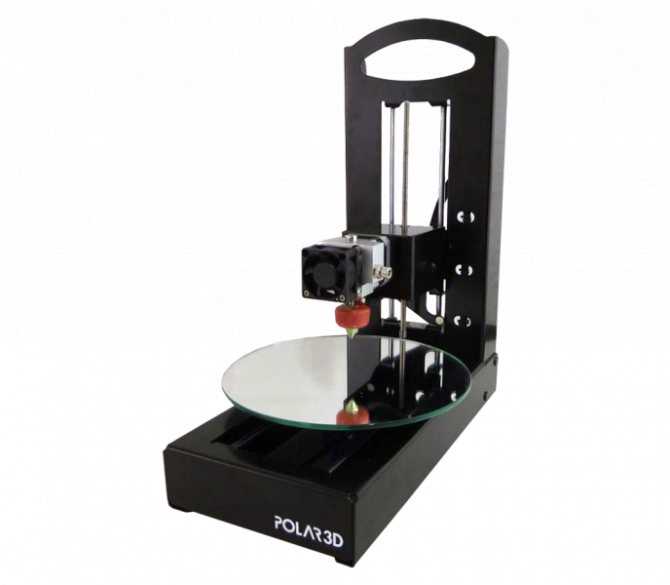 All source code is available on the GitHub page. Thanks to this, many users and developers have shared their ideas and brought them to life. User-developed plugins greatly extend the functionality of OctoPrint. nine0003
All source code is available on the GitHub page. Thanks to this, many users and developers have shared their ideas and brought them to life. User-developed plugins greatly extend the functionality of OctoPrint. nine0003
Manage multiple 3D printers
As you can imagine, this function is useful if you are working with more than one 3D printer. You can connect multiple webcams to one Raspberry Pi.
The video below provides instructions (in English) on how to install three printers on a Raspberry Pi:
Another option is to use OctoFarm, a free and open source service that allows you to control and monitor multiple 3D printers on a single Raspberry Pi. With it, you can monitor multiple 3D printers on the same screen, send files for 3D printing, and monitor the printing progress. nine0003
List of useful plugins for OctoPrint
In general, it is rather difficult to make the top 10 useful OctoPrint features, since the list is really huge. So below is a small selection of additional plugins that will help you simplify and secure the 3D printing process.
So below is a small selection of additional plugins that will help you simplify and secure the 3D printing process.
- Pushover: This plugin sends you push notifications when a print is completed or 3D print fails for some reason. A simple and very practical plugin.
- Heater timeout: It often happens that the 3D printer stays on and the extruder is still hot, which can cause a fire. This heater timeout plug-in disables hot end heating after a set amount of time. This will help you avoid potential fires and excessive electricity bills.
- Emergency stop: there is always the possibility that something might go wrong during 3D printing. This plugin adds a large red bar at the top of the OctoPrint user interface which, when clicked, will stop the 3D printer from working. nine0157
- Bed level visualizer: This plugin is great for those who have installed a bed level visualizer on their 3D printer. This plugin allows you to view the table level measured by the sensor.

Learn more


